Crowdloans, also known as Inital Parachain Offering (IPO), are a way to earn free cryptocurrencies on the Polkadot (DOT) and Kusama (KSM) blockchains. How to participate in these auctions? We explain everything in this comprehensive guide.
What are Polkadot (DOT) and Kusama (KSM)
Ethereum, Bitcoin or Avalanche blockchains are layer 1, Polkadot (DOT) and Kusama (KSM) are what we call layer 0. When you put it like that, you probably don’t understand anything, and there’s nothing wrong with that. Let’s imagine all this with some more telling examples.
Think of your two hands as two independent blockchains. Each of them can manipulate objects without the other having to perform any particular action, just like two separate layer 1 blockchains. Your hands, on the other hand, are connected to your spinal cord and more broadly to your entire brain system through a nerve network, this is your layer 0.
You cannot hold a fork with your brain system, layer 0, but you can with your hands, layer 1. And these, although independent, can transmit the fork to each other through their mutual connection to your brain system.
In the case of Polkadot and Kusama, their respective brain systems are called the Relay Chain. The hands and other limbs connected to it are called parachains, or para-chains. The fork in this example represents financial flows or any other information that can be transmitted in a blockchain.
As you may have gathered, we are not building “on” Polkadot and Kusama, but “for” them. And to be able to integrate this ecosystem, projects need to become a parachain, i.e. rent part of the capacity of this nervous system: the Relay Chain.
To do this, they need impressive quantities of DOT tokens (on Polkadot) or KSM tokens (on Kusama), sometimes several tens of millions, which is what crowdloans are for. An auction system allowing the community to rent their DOT and/or KSM to projects by locking them for a determined period. In exchange, if the projects win an auction, they distribute a portion of their tokens to reward the investors who supported them
Parachain Auctions – How crowdloans work
Before we look at the differences between the Polkadot and Kusama blockchains, let’s take a look at how crowdloans work, which use the same principle: candlelight auctions.
For each new batch of auctions, projects are given a preparation period. During this period, investors can start locking in funds to support the project of their choice. Then comes the end period, and this is when the auction really begins.
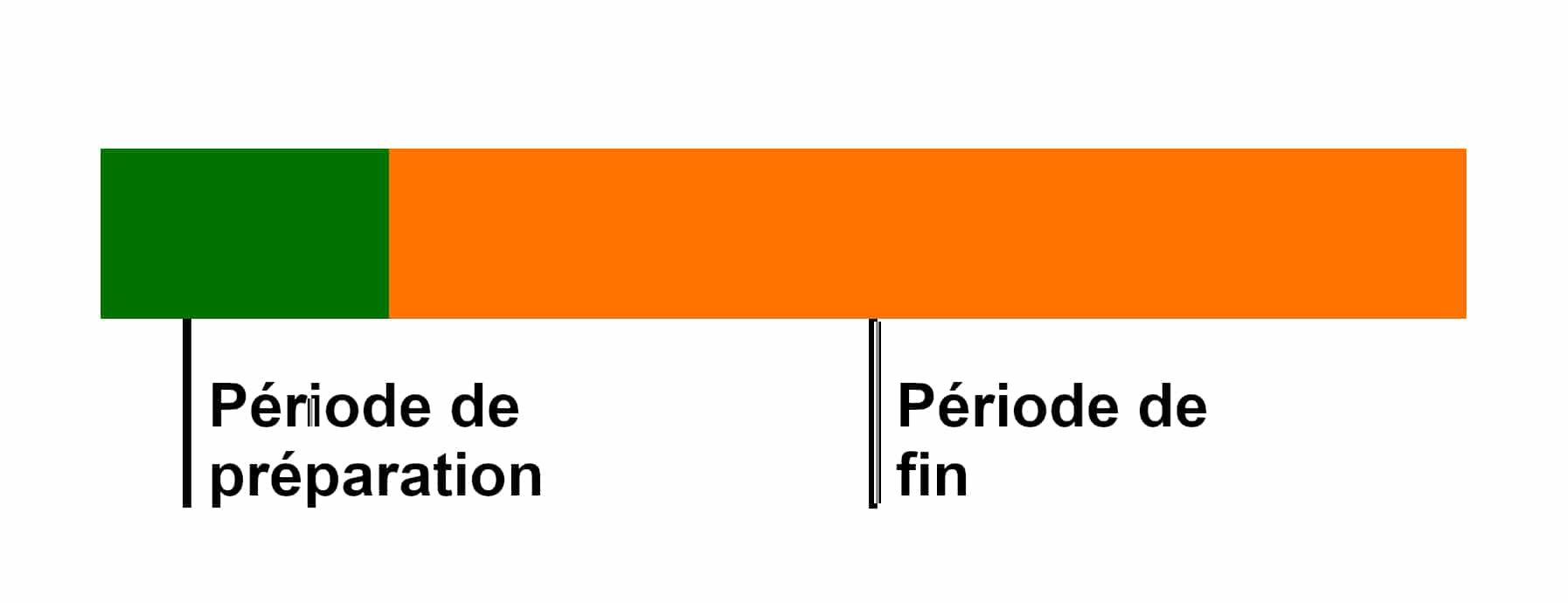
Candle auction illustration
The preparation period and the end period each have a well-defined start and end date that is known to the investor. On the other hand, the interest of this auction mode lies in the fact that nobody knows at what precise moment the winner of the crowdloan is elected.
For example, let’s consider an end period from 01/02/22 at 3pm until 15/02/22 at 3pm. The auction will be open during this time, but if the algorithm has randomly defined that the winner is elected on 08/02/22 at 1:43 pm, all the support given to a project after this limit will lapse.
The aim here is that this does not encourage investors to support the project with the most votes at the last moment. Indeed, if in this example project B has more votes than project A at the end of the end period, while it was the opposite on 08/02/22 at 13:43, project A wins the auction. And no one could have known the actual voting deadline.
So when you want to support a particular project, you should do so as soon as possible or risk having your vote not counted. And as you will certainly have understood, the vote is carried out by locking DOTs or KSMs depending on the blockchain we are on.
When a project wins an auction, your funds are locked for the duration of the lease of the parachain slot. If the auction fails, your stake is also returned to you at the end of the auction. In both cases, you get your DOT and/or KSM back after the lock-in period.
The difference is that if the project you supported wins their slot, you are eligible for a distribution of their token. However, you must have voted within the effective timeframe of the candle auction. At the time of writing, there are a maximum of 100 para-chain slots on each of the two blockchains.
On the Parachains.info website, you can find a detailed follow-up of the auction schedule for Polkadot. The site also gives you access to the actual end of the candle auction as shown below:
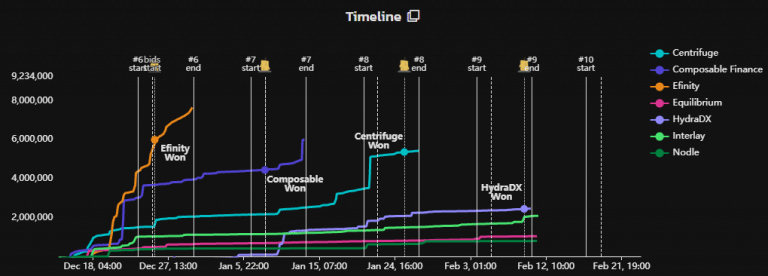
Polkadot parachute auction tracking
Differences between Polkadot (DOT) and Kusama (KSM) parachutes
Although very similar, the two blockchains have some notable differences. First of all, it is worth breaking a common misconception: Kusama is not the test network for Polkadot, rather Rococo has that role.
Think of Kusama as a dress rehearsal before the big live show to fine-tune the final settings, but the real tests take place on Rococo, which is not the subject today.
In general, Kusama works four times faster than Polkadot. Mind you, we are talking about its organisation, not the speed of its transactions. To give a quick example, our daily lives are organised into days, which are themselves divided into 24 one-hour periods. Kusama and Polkadot organise themselves in eras, which are themselves divided into periods.
This makes it possible to organise the functioning of a blockchain, just as we eat at fixed times, a well-defined number of actions take place in each era of a network. And it is this time value that is four times faster on Kusama. This allows the network to be more flexible and to realise more quickly what needs to be changed before a deployment on Polkadot.
In the same logic, on Polkadot, the rental period for a para-chain is 96 weeks, whereas on Kusama it is reduced from a few months to one year. And by extension, so is the duration of the lock on your funds.
Let’s look at an example in pictures to make this more meaningful. In the illustration below, we can see that an auction ends on 7 February at block 11,288,400 on Kusama, so the winner will be allocated a parachute slot until 31 January 2023.
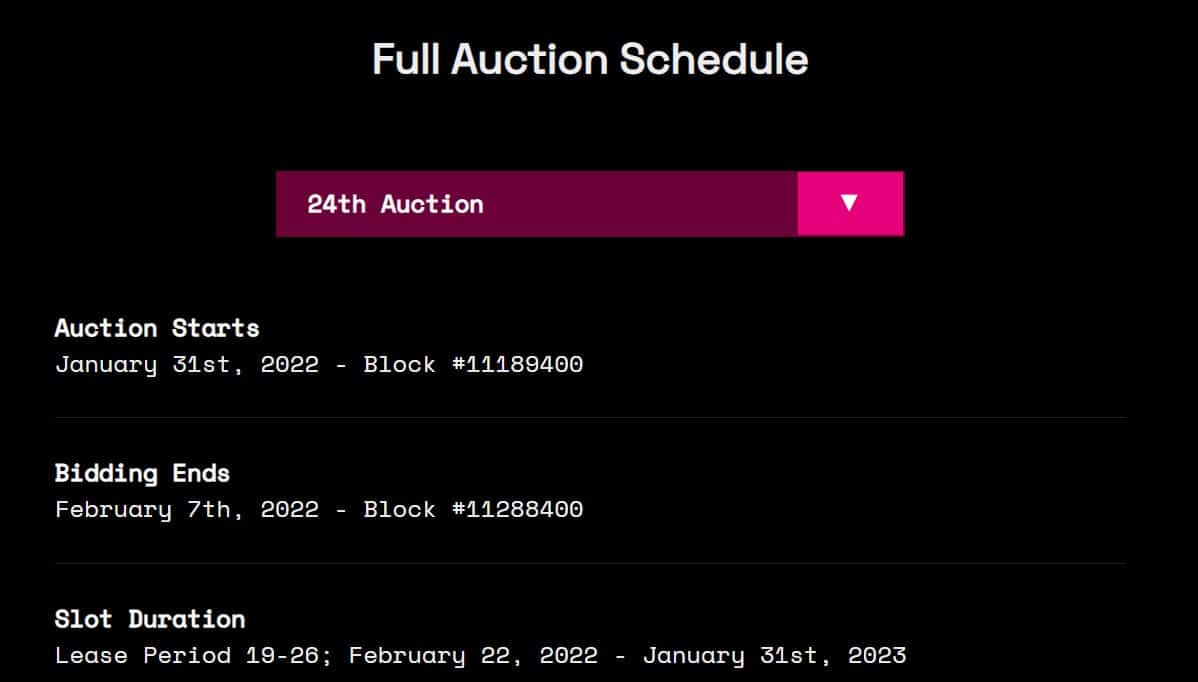
Example of an auction schedule on Kusama
On the other hand, the winner of the February 10th Polkadot auction will have a slot of parachain for a longer period, namely from March 11th 2022 to January 12th 2024. By the way, if you’ve read the previous part of this article, you’ll notice that while the crowdloan starts on February 3rd, the actual voting deadline can be any time between February 5th and 10th.
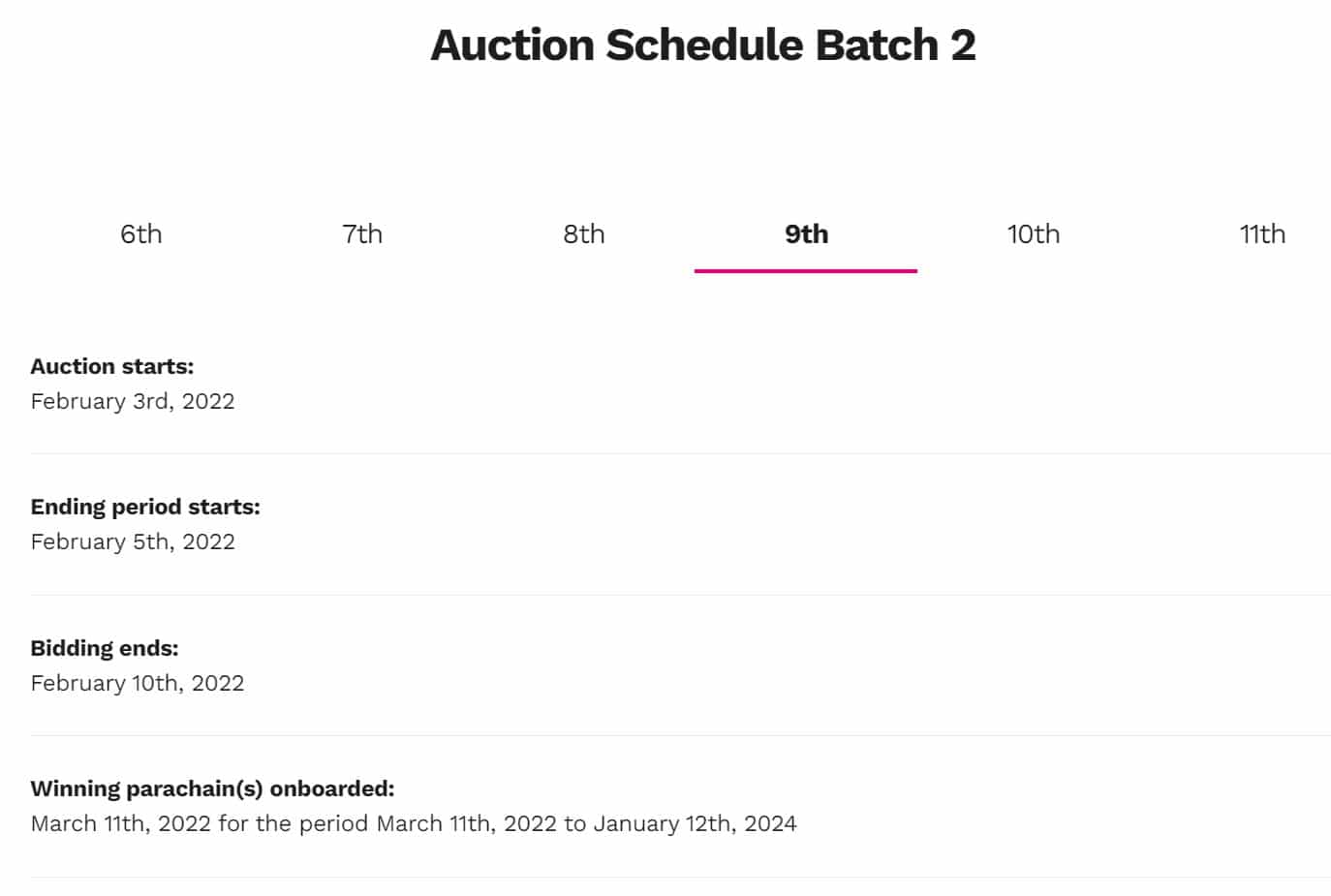
Example of an auction schedule on Polkadot
To participate in an auction on Kusama you will have to support a project with a minimum of 0.1 KSM, whereas with the Polkadot network, the minimum is 5 DOT.
Finally, projects change their name according to the blockchain where they implement their para-chain to avoid confusion. For example, the Moonbeam project on Polkadot is called Moonriver on Kusama, or Acala on Polkadot is called Karura on Kusama. It is important to know that if a project wants to be present on both networks, it has to earn a crowdloan on each of them
How to participate in the Polkadot and Kusama parachain auctions
The decentralised method
If you’re used to using wallets like MetaMask, this won’t be too difficult. Here, the official wallet is the Polkadot{.js} browser extension (on a computer only). Like MetaMask, be careful how you keep your 12-word recovery phrase safe. No website, other than the official extension itself as part of a recovery or anyone else will ask you for it.
Once your wallet is configured, you can select the network on which you want to bid on crowdloans and then go to the official application dedicated to this purpose. For the rest of this tutorial, we will use the Polkadot network, but be aware that the mechanics are exactly the same on Kusama.
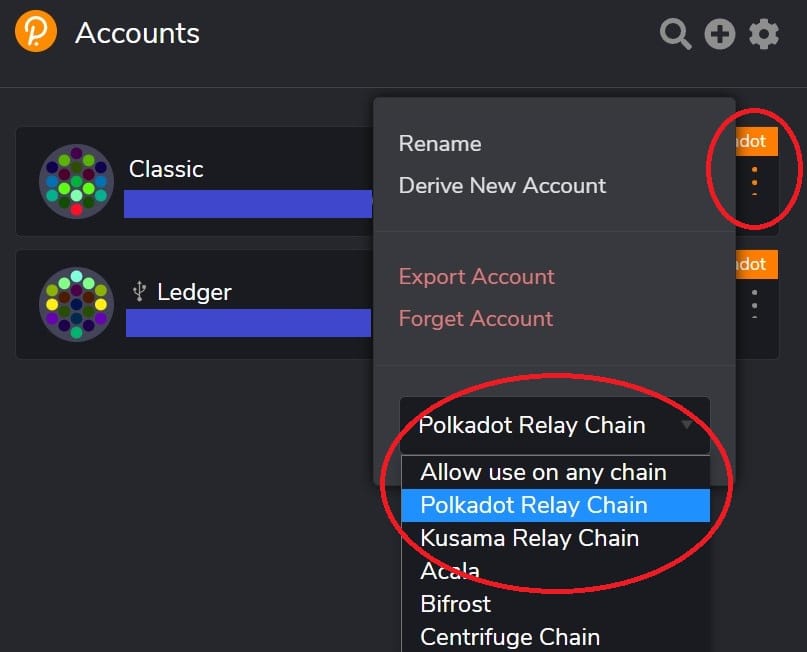
View of the official Polkadot {.js} extension
Once on the official website, you should have the banner below appearing at the top of the screen.

Official website banner polkadot.js.org
If not, click on the name that appears on the left (to the left of “Accounts”) and then: Polkadot → Apply.
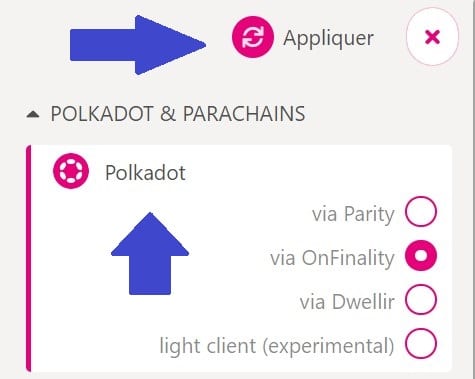
Network selection menu
In the top banner, then click on Accounts → Accounts. You will arrive on a page allowing you to manage all the addresses added to your extension. Addresses that should logically be at 0 if it’s the first time you browse this blockchain. You will have to credit them with DOT tokens.
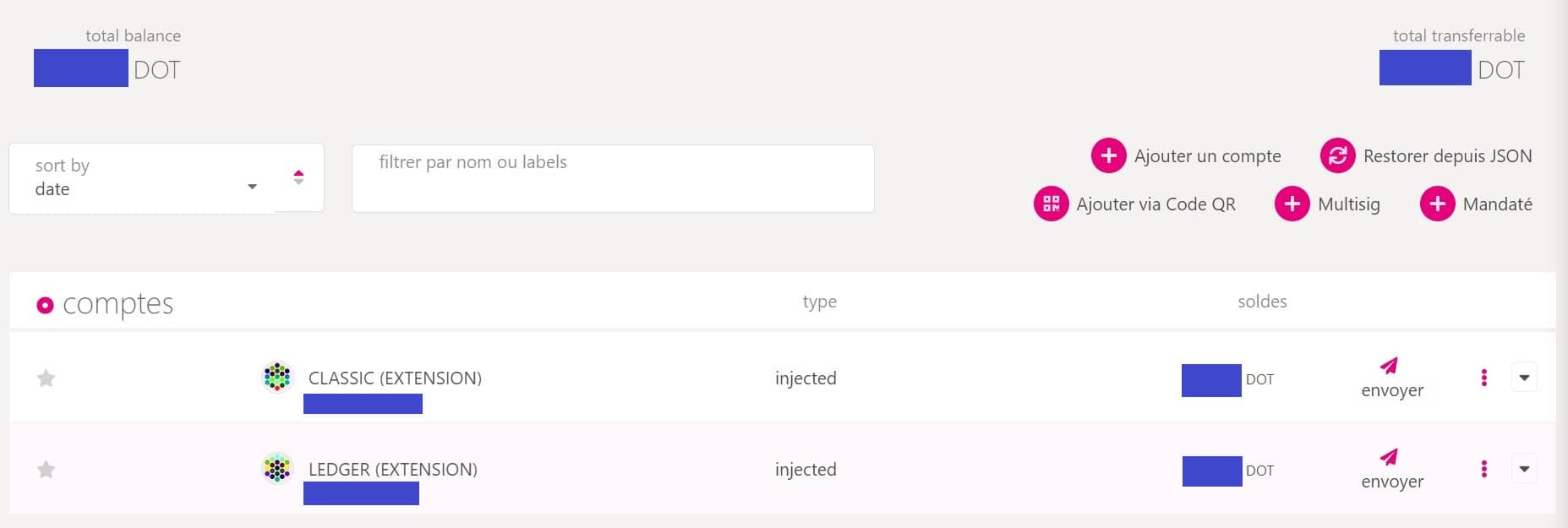
View of your different accounts on the Polkadot blockchain
To credit an account with DOT tokens, click on the name you have given to the account, a window will open on the right of your page and you can copy your address at the top of the window. A simpler solution is to copy the address directly from your browser extension (see illustration “View of the official Polkadot{.js} extension” above).
Then use this address from the account where you already have DOTs. If you don’t have any and want to get some, you can buy some on Binance:
Once you have your DOTs on your address, you will need to go to the Network → Parachain → Crowdloan tab to arrive at the page below which lists all the current auctions:
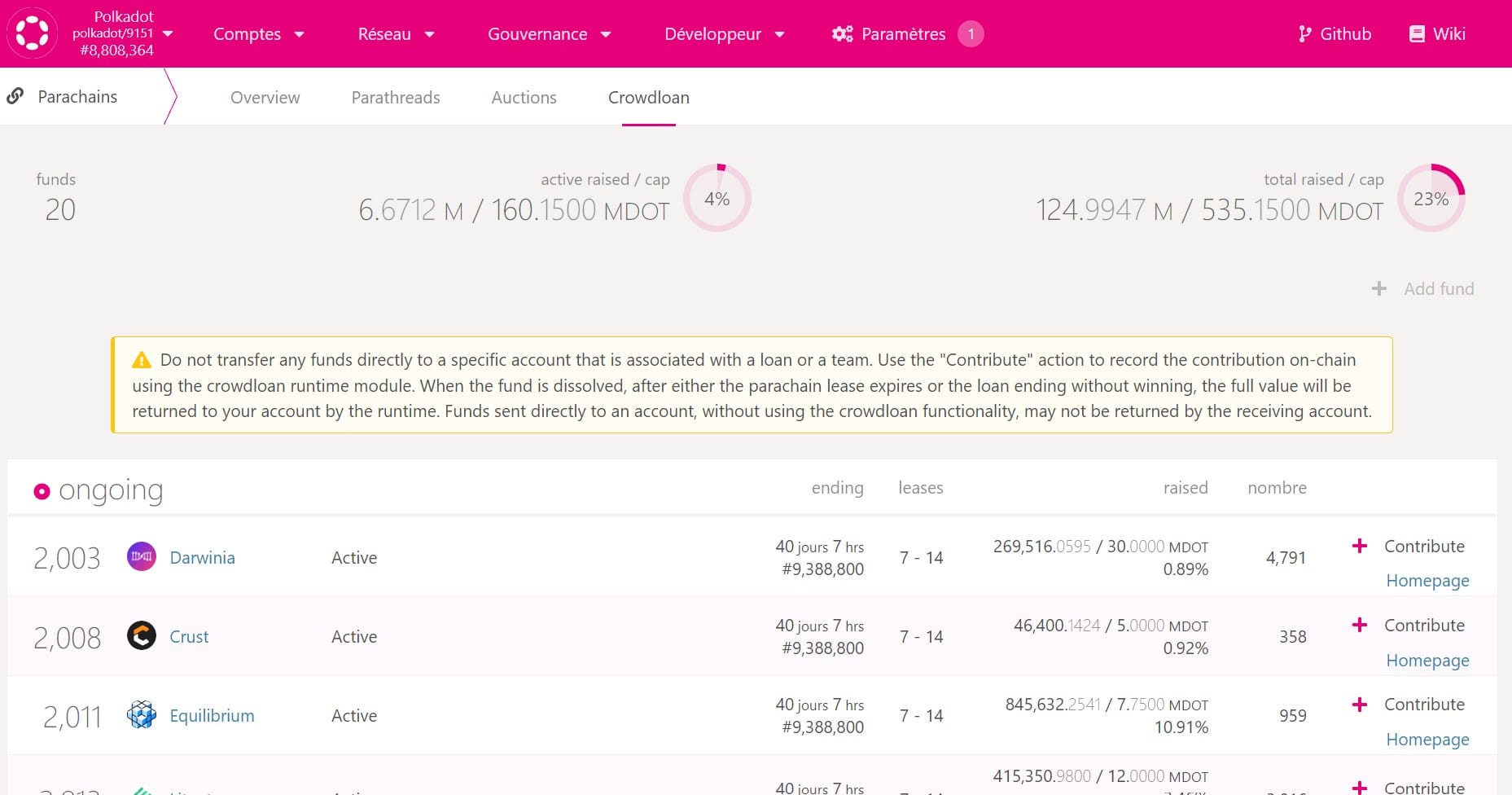
Main crowdloan page on Polkadot
For each project, you will see the time remaining before the end of the auction, the percentage of progress of the funds they are trying to raise, a homepage link to their site and then the possibility to vote with the “Contribute” button.
Once you have done your research and selected the project(s) you wish to support, click on “Contribute”. You will see the following window informing you of the minimum amount to contribute and the possibility to choose the account with which to participate in the crowdloan
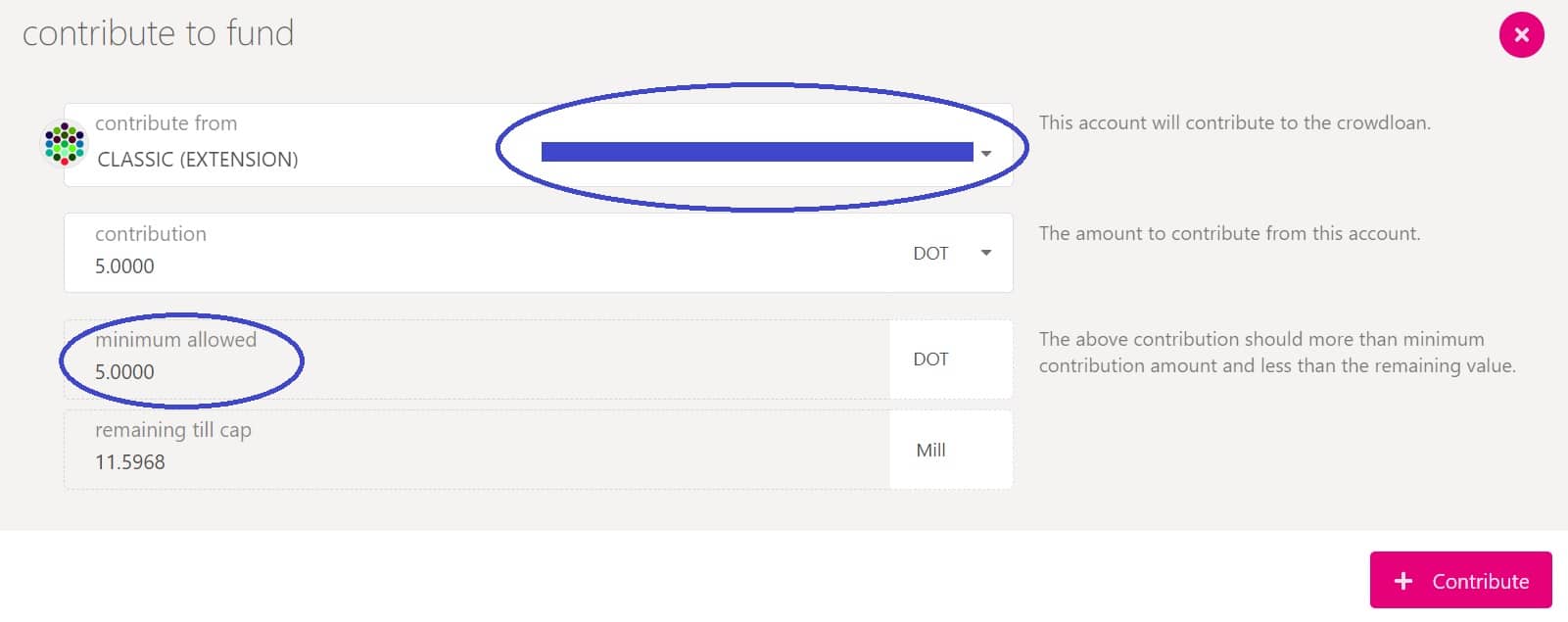
Preview of a contribution to a Polkadot auction
After clicking on “Contribute” again, the transaction signature menu will open to validate the transaction. If the auction is successful, keep in mind that you will not have access to your DOTs for 96 weeks on Polkadot and for several months for your KSMs on Kusama. If you lose, your DOTs will be returned to you at the end of the voting round in which the project participated.
Afterwards, you will be able to see your votes and their amount in the “My contributions” tab, as below with the Interlay project, which seeks to bring Bitcoin to Polkadot. Please don’t take this as investment advice, this illustration is for information purposes only.

View of a crowdloan contribution
It is possible that the display does not work properly despite your vote, in which case we invite you to explore the project website. By connecting your wallet, it is sometimes possible to see the amount of your contribution, as in this example with Equilibrium below
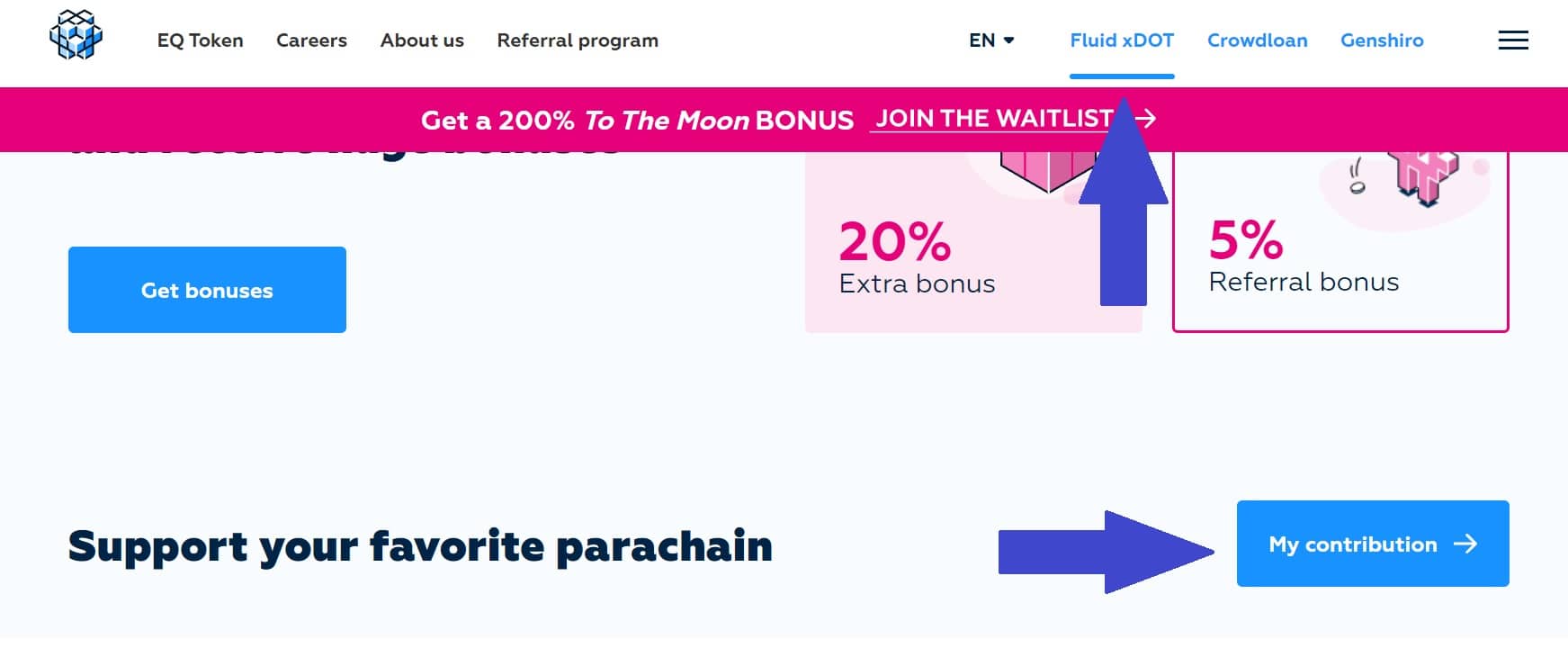
Example of contribution to an auction via a project website
Now let’s look at an alternative method of participating in crowdloans
A centralized method to bid on a parachain
This is not the only option, but Just Mining is a French company with PSAN status, so let’s talk about their solution for participating in crowdloans. In this case, this method is currently limited to the Polkadot blockchain parachains:
You will need to create an account and complete a KYC process before you can invest, and then go to the “Parachains” tab when your identity verification is validated.
It is important to note that Just Mining does not offer all of Polkadot’s parachains on its site, which could be a hindrance if your pet project is not listed. On the other hand, it is an easier solution for someone who is not used to interacting directly with a decentralised ecosystem.
In the case of a winning bid, Just Mining will keep 5% of the rewards you are eligible for. In addition, when bidding on a crowdloan in a decentralised way, you are sometimes entitled to bonus rewards if you do it early enough, this possibility is not available with Just Mining.
One of the big advantages of using the Just Mining platform will be for small budgets. Where a minimum of 5 DOTs are required using the decentralised method, Just Mining allows you to start bidding with just one DOT. You will need to buy DOT directly from their platform for a 4% transaction fee.

Participate in crowdloans on Just Mining
As shown in the illustration above, you can also participate by depositing DOTs from another address or using funds that may already be in your Just Mining account.
Please note that if you are sending DOTs from an external address to Just Mining the minimum of 5 DOTs is applied, you will need to fill in the exact amount to be credited and make a deposit request. You will then receive an email from their customer service with an address to make the transfer
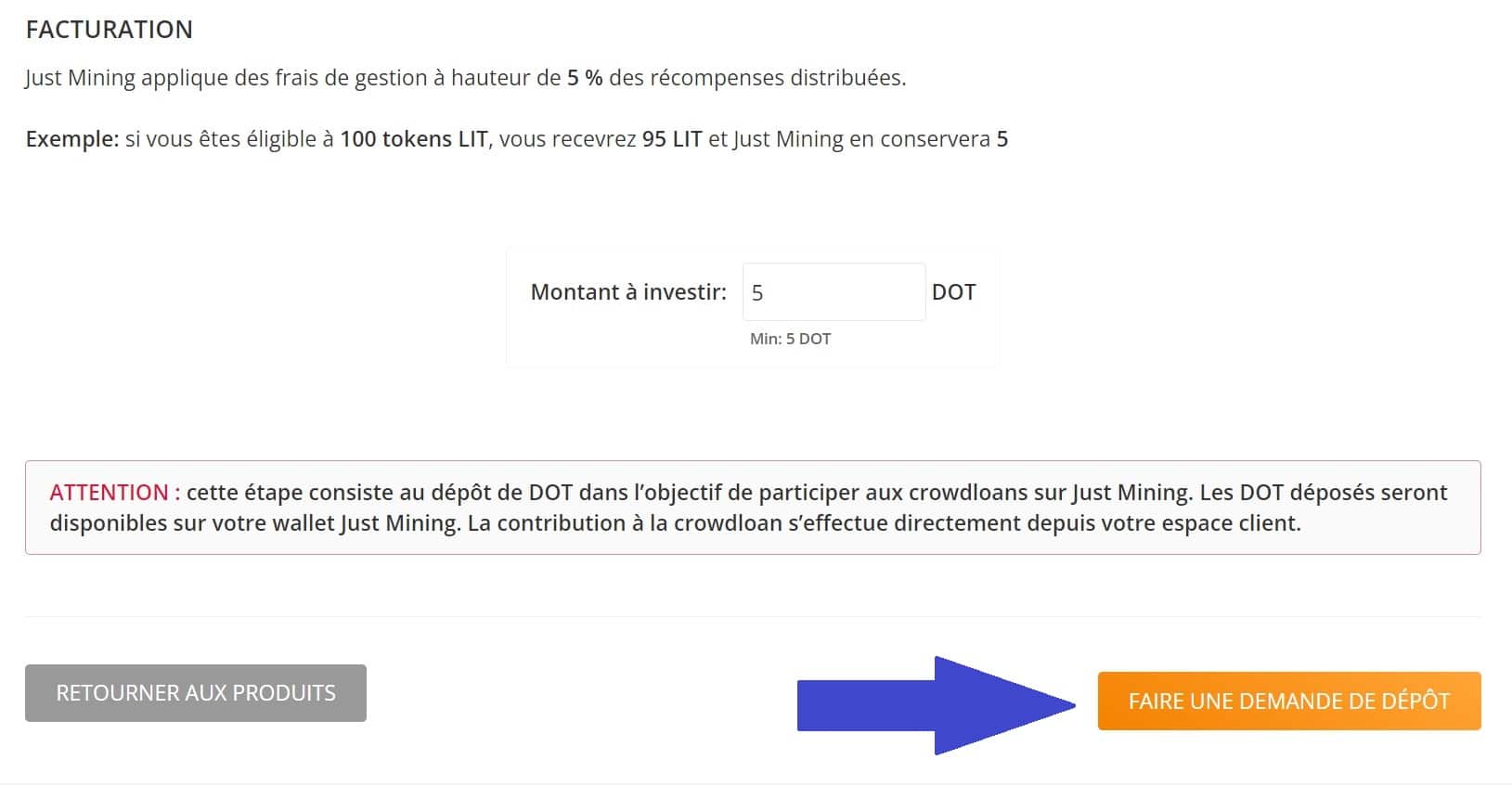
Deposit DOTs on Just Mining
As with the traditional solution, your funds will be locked in for the duration of the lease of the parachain slot if the auction is successful. If the auction fails, your DOTs will be credited back to you within 48 hours of the end of the auction.
You now know how to participate in the Polkadot and Kusama crowdloans. Keep in mind, however, that while there is no risk of losing your investment, apart from the technical risk, your funds are locked in for periods of time that can be substantial. This implies that crypto-currencies can lose value in the meantime.
As with any investment, take the time to weigh up the pros and cons of each option in relation to your own strategy.
